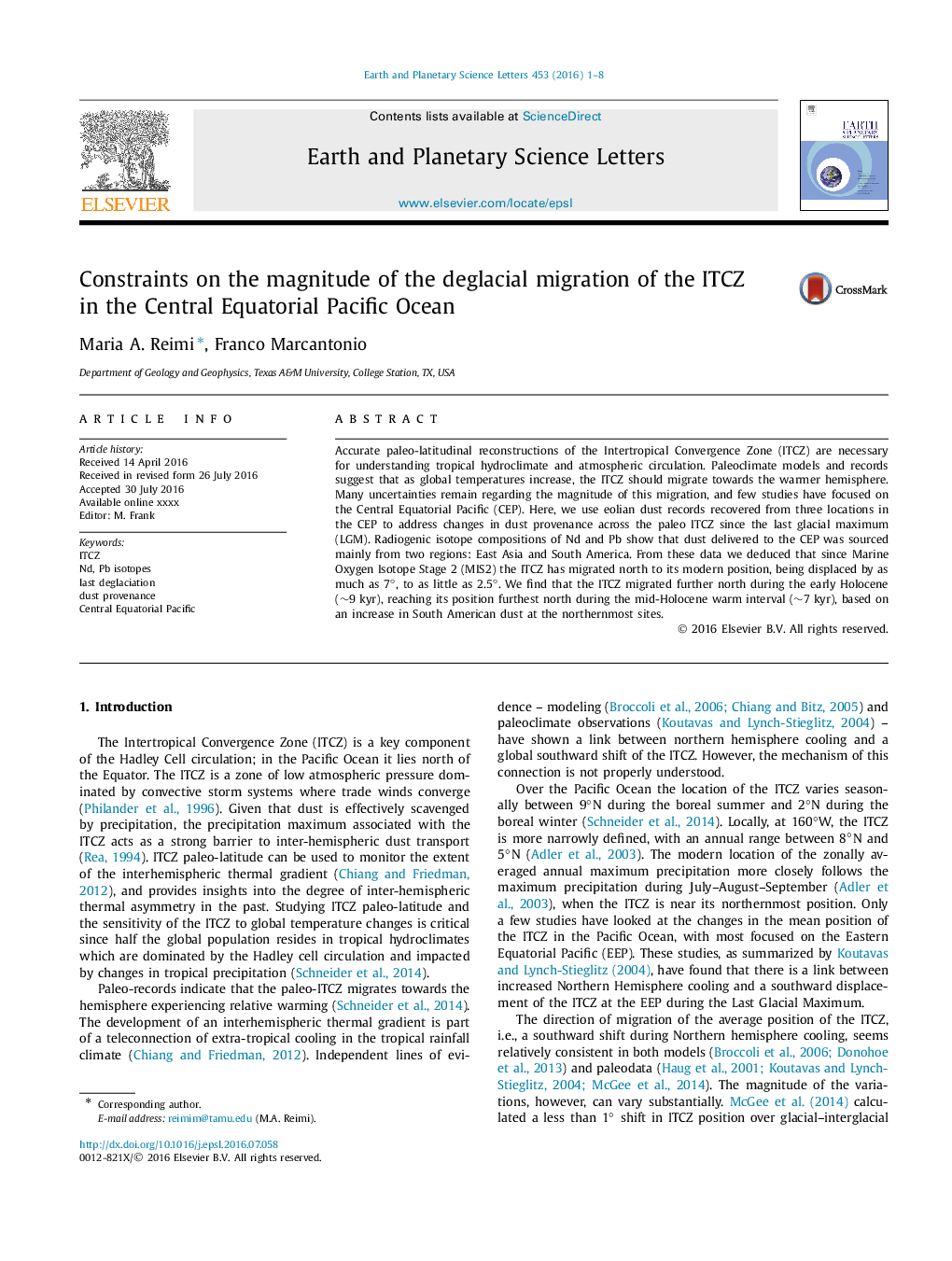| Article ID | Journal | Published Year | Pages | File Type |
|---|---|---|---|---|
| 6427135 | Earth and Planetary Science Letters | 2016 | 8 Pages |
Abstract
Accurate paleo-latitudinal reconstructions of the Intertropical Convergence Zone (ITCZ) are necessary for understanding tropical hydroclimate and atmospheric circulation. Paleoclimate models and records suggest that as global temperatures increase, the ITCZ should migrate towards the warmer hemisphere. Many uncertainties remain regarding the magnitude of this migration, and few studies have focused on the Central Equatorial Pacific (CEP). Here, we use eolian dust records recovered from three locations in the CEP to address changes in dust provenance across the paleo ITCZ since the last glacial maximum (LGM). Radiogenic isotope compositions of Nd and Pb show that dust delivered to the CEP was sourced mainly from two regions: East Asia and South America. From these data we deduced that since Marine Oxygen Isotope Stage 2 (MIS2) the ITCZ has migrated north to its modern position, being displaced by as much as 7°, to as little as 2.5°. We find that the ITCZ migrated further north during the early Holocene (â¼9 kyr), reaching its position furthest north during the mid-Holocene warm interval (â¼7 kyr), based on an increase in South American dust at the northernmost sites.
Related Topics
Physical Sciences and Engineering
Earth and Planetary Sciences
Earth and Planetary Sciences (General)
Authors
Maria A. Reimi, Franco Marcantonio,
